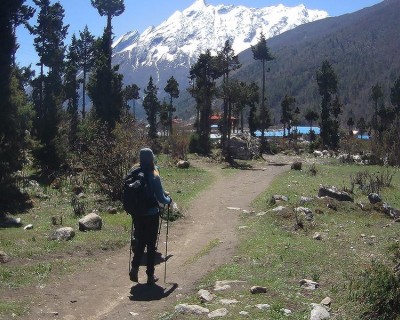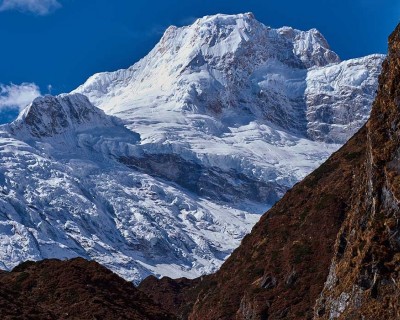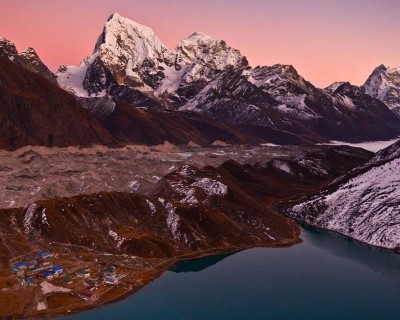General Annapurna Circuit 7 Days Trek Outline
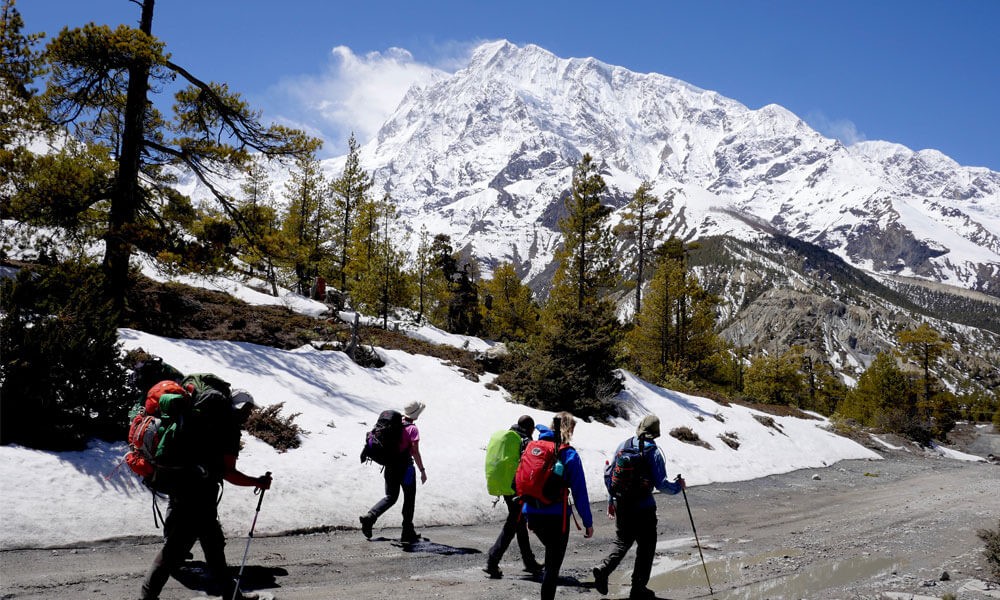
This is a general trekking route and itinerary plan that of the standard Annapurna Circuit 7 Days Trek; the itinerary may vary slightly depending on the route taken.
Day 01: Drive from Kathmandu (1,350 meters/ 4,429 feet ) to Manang (3,519 meters/ 11,545 feet)
Day 02: Acclimatization day at Manang
Day 03: Trekking to Ledar (4,200 meters/ 13,779 feet) from Manang
Day 04: Ledar to High Camp (4,880 meters/ 16,010 feet) trek
Day 05: High camp to Muktinath (3,710 meters/ 12,171 feet) via Thorong La Pass (5,416 meters/ 17,769 feet)
Day 06: Trekking from Muktinath to Jomsom (2,743 meters/ 8,999 feet)
Day 07: Flight from Jomsom to Pokhara (822 meters/ 2,696 feet)
Best Time for Annapurna Circuit 7 Days Trek
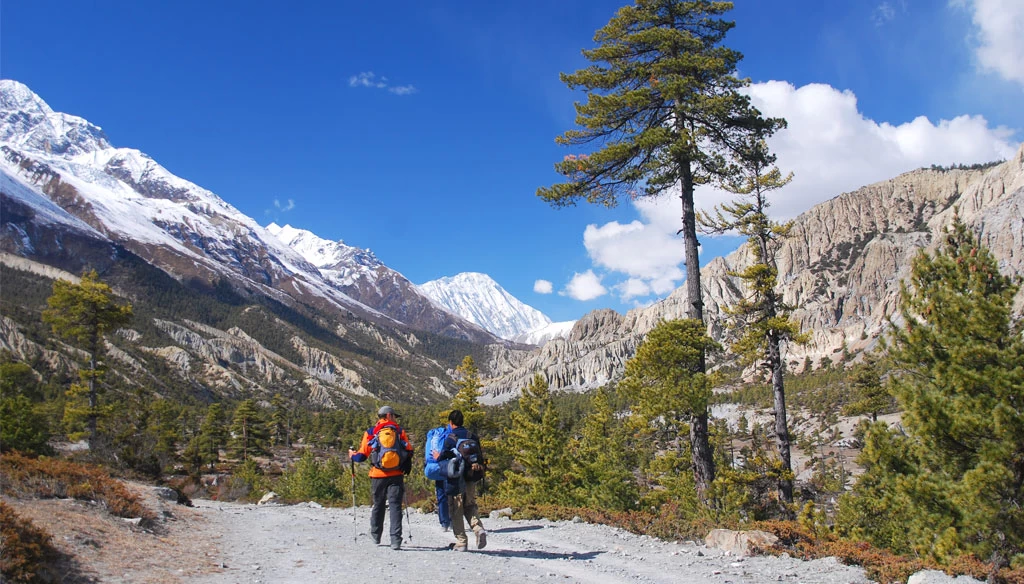
To get the best out of the exploration of the second most popular trekking region in the country, the ideal timeframe would be the spring (March to May) and autumn (September to November) seasons. The weather is stable during these seasons, and you will be able to enjoy trekking on a dry trail accompanied by the unobstructed picturesque views of the Annapurna region at its peak.
Even among both of these peak seasons, autumn is considered to be the number one season for trekking adventures and mountain expeditions in the Himalayas. The weather and temperature in this season are the most favorable, not too cold and not too hot, hovering around 10°C to 20°C.
You can also expect to enjoy the most spectacular Himalayan vistas due to the clear days, and the fresh, lush landscapes nourished by the monsoon make every day’s trekking an exhilarating experience. Similarly, the spring season, the blooming season in the Himalayan, is known as a paradise for nature lovers.
During the spring season, the entire Himalayan region is brimming with life, the dotted wildflowers cover the entire lower trekking route, and you can also expect to witness the eloped flora and fauna of the Annapurna Conservation Area as they are busy enjoying the nectar of the nature. The vibrant landscape of the region, lush green terrain, clear blue skies, and sparkling peaks in the Himalayas make it the best season to snap that perfect shot.
You can expect the temperature of the Annapurna region to be around 14°C to 23°C in the daytime and around 5°C. The altitude above 4,000 meters is generally an alpine environment, so you can expect the temperature to be minus degrees during the early mornings and nights, so make sure to pack for every climatic condition during your trek.
Annapurna Circuit Trek Difficulty Factors
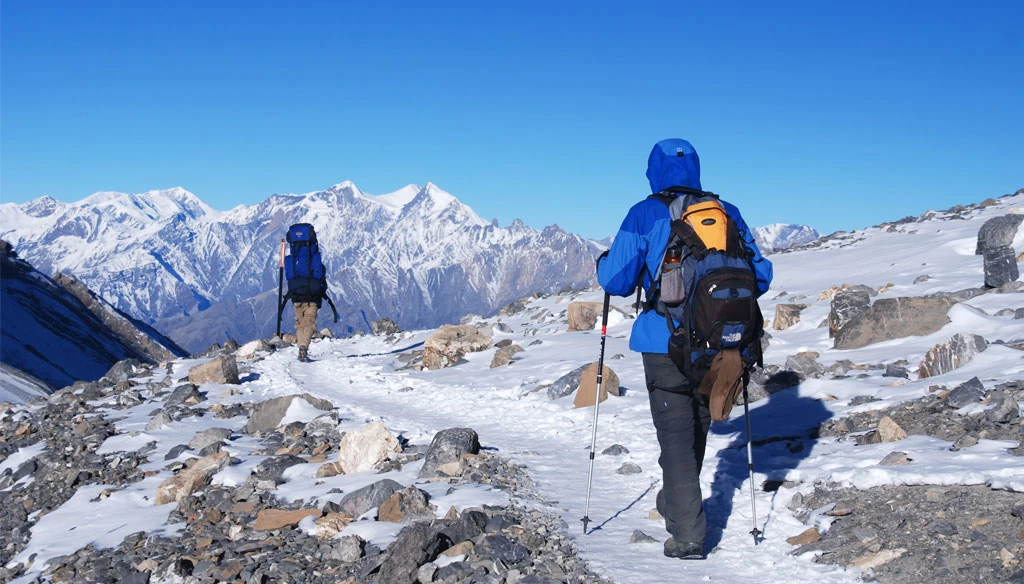
The Annapurna Circuit 7 Days Trek has been labeled as a ‘moderate’ expedition of the Himalayas. It means that if you are interested in doing this trek, you don’t need any prior high-altitude trekking experience, and the trekking route doesn’t have any kind of technical segments. Nonetheless, Annapurna Circuit 7 Days Trek is still a Himalayan expedition and nothing like a hike in the backyard.
Thus, you need to prepare efficiently for this trekking expedition to enjoy a comfortable and memorable adventure. Let’s break down some of the major challenges of this Himalayan adventure so you can prepare to counter them effectively.
Altitude Sickness
Altitude sickness is a major challenge of any high-altitude adventure; after overcoming an altitude of over 2,500 meters, it gets challenging for a human body to acclimatize to adapt to the rising altitude. This causes various forms of altitude, from mild Acute Mountain Sickness (AMS) to severe forms of altitude sickness like High Altitude Cerebral Edema (HACE) and High Altitude Pulmonary Edema (HAPE).
In this short Annapurna Circuit 7 Days Trek, you start your adventure with a significant elevation jump point Manang at 3,519 meters (11,545 feet). Moving along your trekking route, you will overcome other altitude regions like Ledar (4,200 meters),High Camp (4,880 meters), and the highest elevation point of this entire adventure, one of the high Himalayan passes of the Annapurna region, Thorong La Pass at 5,416 meters (17,769 feet).
Trekking Route
In a normal trekking route of the Annapurna Circuit Trek, you will cover an approximate distance of 160 km to 230 km. Although this short Annapurna Circuit 7 Days Trek is not as long as the classical trek in the region, you will still cover a trekking distance of 6- 7 hours in each day of your trek days.
Starting right off the bat at the high altitude can be already challenging due to the acclimatization process, and moving further ahead in your trekking route, traversing across the rugged and rocky routes can be a challenge in itself. If you are an athlete or work out regularly, this may not be much of a big deal for you; however, moving to higher altitudes with low oxygen saturation levels and thin air can be significantly draining.
Acclimatization Days
The general Annapurna Circuit Trek lasts around 12- 22 days, depending on the highlight exploration and the itinerary plans. But, this short Annapurna Circuit 7 Days Trek is a quick-paced adventure where you jump across the high elevation points with minimum time to acclimatize properly to the rising altitude.
If you have previously done any kind of high-altitude adventures, then you understand their significance in the adventure. You generally start your trekking adventure from a low altitude point and gradually move along the inclining region, heading toward the maximum elevation point. So, although there is a single acclimatization day to adapt to the high-altitude environment, the quick-paced nature of the adventure may make it difficult for many to acclimatize to the sudden change in atmospheric level.
Remoteness
Yes, Annapurna is the second most popular and mainstream trekking region in Nepal; however, it is still a Himalayan expedition away from the bustling urban settlements. During your adventure, you will be isolated from most of the modern-day technologies and amenities. So, it will be folly if you are expecting the luxurious service you can enjoy at a star hotel during your stay at the teahouses in the region.
Due to the lack of proper transportation modes, the higher regions in the trekking trails pass through less developed areas that are behind in the infrastructural development as well as technology. The internet, electricity, a/c, wide-screen TV, and other telecommunication services may be only limited to the lower region. There are also only a few numbers of health facilities in the region, and for an emergency, helicopter rescue is your only option.
Weather Factors
Annapurna Circuit 7 Days is a year-round trekking adventure; you can enjoy this beautiful Himalayan exploration in any season you want. However, unlike the peak seasons like autumn and spring, known for their favorable weather conditions, doing this trek during the off-season like winter (December to February) and monsoon (June to August), can be quite challenging.
The winter season is the coldest season in the Himalayas, the trails at the higher regions are completely covered in the snow. You can also expect cold freezing winds and snowfalls throughout each day of your adventure; still, with the right equipment and gears, Annapurna Circuit Trek is doble during this season.
However, the same cannot be said about the monsoon season; the continuous downpours, muddy and slippery trails, transportation delays, and natural disasters like landslides and flooding make it one of the least favored seasons for the Annapurna Circuit 7 Days trek.
Is This Trek Suitable for Me?
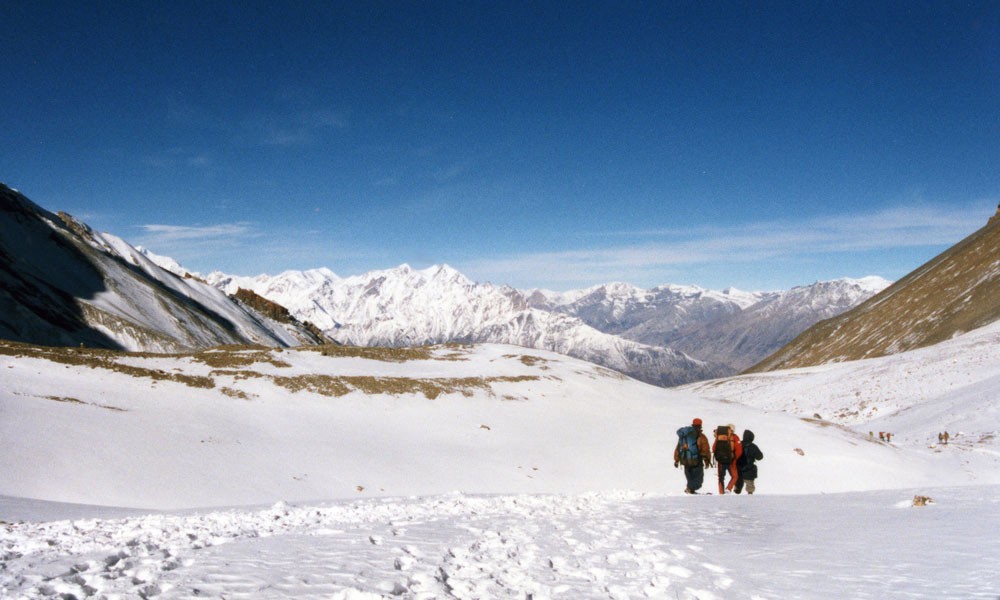
After going through the overall difficulty level of Annapurna Circuit 7 Days Trek, you might be worried whether this might be the right Himalayan exploration for you or not. Well, you should definitely try this remarkable trekking experience in the second most popular trekking route in the country.
Even though there are some moderate levels of difficulty factors in your trekking adventure, you can overcome them with an adequate amount of preparation. If you have prepared well, have a basic level of fitness, and a good health condition, you are eligible to do this trek. The success rate of the Annapurna Circuit Trek is at 97%; in the past, even children and elderly trekkers over 70 have successfully completed this expedition.
Training and Preparation
For a comfortable and memorable experience in your Annapurna Circuit 7 Days Trek, you must make sure to prepare efficiently. This way, you will be able to significantly reduce the overall difficulty level of the expedition. As this is a high-altitude and physically demanding adventure, you should focus on your strength and endurance level during the preparation.
The generally recommended period for the preparation is 4- 6 weeks prior to the expedition; however, you can adjust the period by yourself after assessing your overall physical capabilities. For instance, if you are an athlete or work regularly, you don’t need to put that much effort into your training period, but if you haven't worked out a single day in your life, you may want to extend your training period.
For a better understanding of the overall trekking experience, you can also do some practice hikes at naturally steep landscapes near you. This way, you will have a grasp of what to expect during your expedition, and you will be able to design an effective training program for yourself.
Strength and Endurance Exercises
- Push up
- Pull up
- Plank
- Squat
- Deadlift
- Lateral raise
- Bicep curl
- Front raise
- Shoulder press
- Bench press
- Step up
- Calf raise
- Leg press
- Leg curl
- Lunge
Cardiovascular Exercises
- High knees
- Jumping jack
- Aerobics
- Burpree
- Jogging
- Swimming
- Dancing
- Rowing
- Cardio
- Cycling
Mental Preparation
While physical preparation is the most crucial component to overcome the difficult factors of the Annapurna Circuit 7 Days Trek, you shouldn't ignore the mental preparation part as well. With the right determination and attitude, you will be able to make the most out of the classical Himalayan adventure.
Here are some tips on the mental preparation part for the Annapurna Circuit Trek.
- Identify your fears and work on them
- Practice getting out of your comfort zone
- Lower your expectations; remember it is an exploration of the remote part of the country
- Surround yourself with positive people
- Stay focused and determined
- Visualize your journey and movements
- Pay attention to your body language and stay positive consistently
Food and Accommodation.
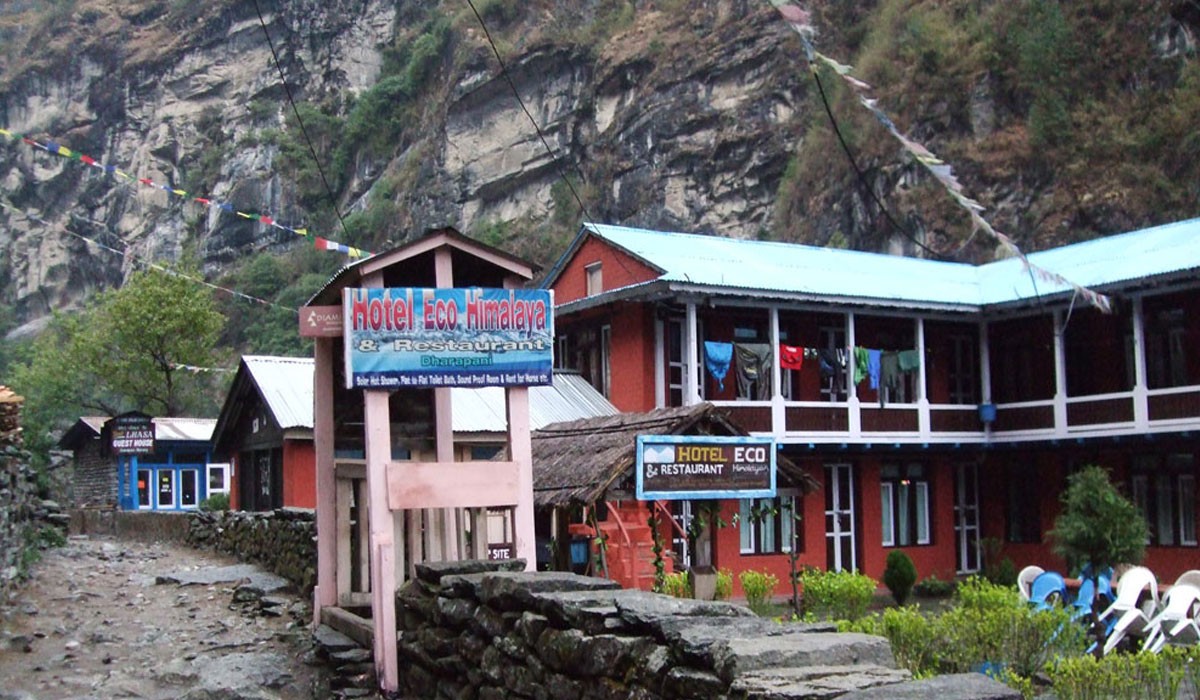 As the Annapurna Circuit 7 Days Trek takes place on the second most popular trekking route in the entire country, you can expect a similar level of services and amenities from this mainstream trekking route during your expedition. You will also have the option to switch to a luxurious trekking option from a standard one which has some additional perks and more luxurious amenities in the food and accommodation segment.
As the Annapurna Circuit 7 Days Trek takes place on the second most popular trekking route in the entire country, you can expect a similar level of services and amenities from this mainstream trekking route during your expedition. You will also have the option to switch to a luxurious trekking option from a standard one which has some additional perks and more luxurious amenities in the food and accommodation segment.
Most generally, you can expect a wide variety of diversified local cuisines, Tibetan and Indian culture influences dishes as well as some star continental dishes. You can expect the following food menus at the teahouses along your trekking route during the Annapurna Circuit 7 Days Trek.
For Breakfast
- Tea, coffee, fresh juice
- Eggs
- Bread, toasts
- Porridge
- Tibetan bread
- Pancakes
- Soup
- Fruits
- Salad
- Pancake
- Oats
- Muesliu/ cornflakes
- Chapati
- Paratha
For Lunch and Dinner
- Dal bhat tarkari
- Thakali khana sets
- Noodles
- Pasta
- Burger
- Pizza
- Momos/ dumplings
- Macaroni
- Spring roll
- Potato chips
- Spaghetti
- Steak
- Sandwiches
- Pakoda
- Thukpa
- Sherpa Stew
**Note: Vegan and vegetarian meals are also available during your Annapurna Circuit 7 Days Trek. Still, a majority of the Nepali population practices a vegetarian lifestyle, so almost all eatery establishments in the country prepare vegetarian, non-vegetarian, and vegan diets**
Accommodation
During your Annapurna Circuit 7 Days Trek, you can expect a moderate level of accommodation facilities in your standard package. The rooms in the teahouses run by the natives of the region are available in dormitory style with 2- 3 adjacent beds in a single room. Your rooms will be well-furnished and warm; you will also receive a pillow, blanket, and comfortable mattress for every single bed.
As for the bathroom, like the room, it is also on a shared basis. You can expect a western-styled bathroom with shower features in the lower regions; however, in the higher regions, the bathroom is traditional style at most teahouses, and you will get a bucket of warm water to clean yourself instead of a hot shower.
Water
Although tap water is available throughout your trekking route in the Annapurna Circuit 7 Days Trek, you are not recommended to drink it due to safety concerns. As for the bottled mineral water along the teahouses, they can cost upto US$ 3- US$ 5 in the higher regions.
The best way to drink the recommended limit of 3- 4 liters of water during each day of your trek is to drink and store the boiled water at the teahouses. You can also use water purification solutions and tablets to stay on the safe side.
You may also like:
Gear and Equipment for the Annapurna Circuit 7 Days
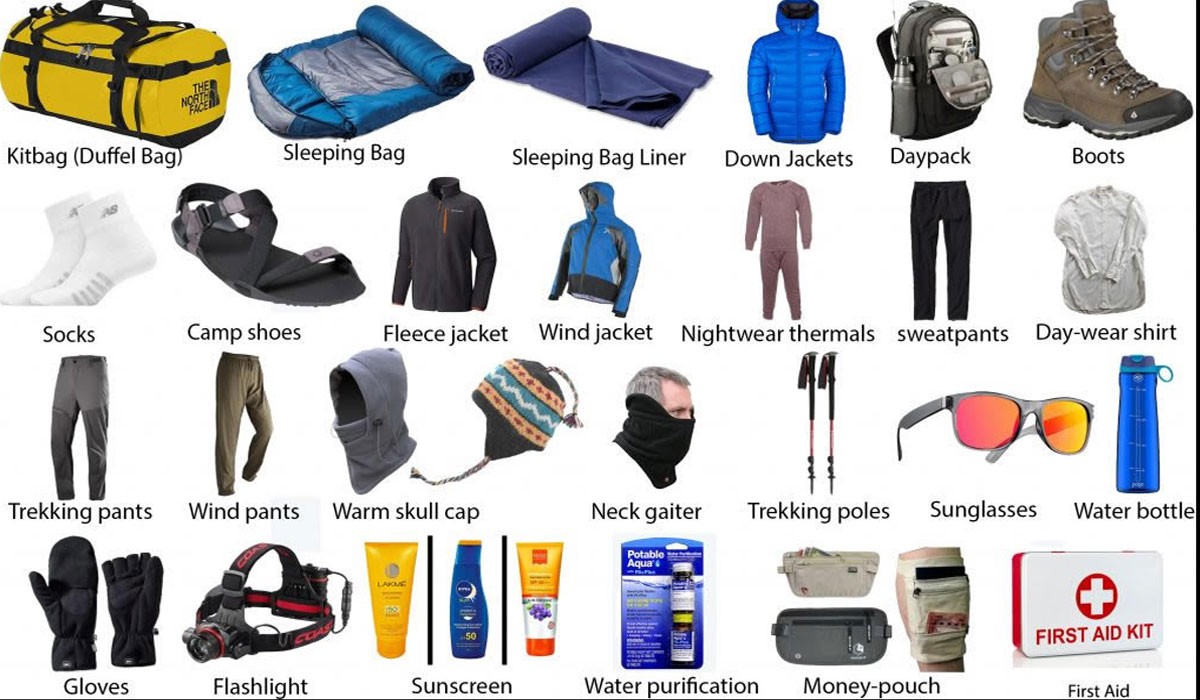 To make your Annapurna Circuit 7 Days Trek an enjoyable and memorable journey, packing the right gear and equipment is a must. You need to be prepared for long hours of trekking in different climatic zones; although you are recommended to pack light for the adventure, you don’t want to miss the essentials.
To make your Annapurna Circuit 7 Days Trek an enjoyable and memorable journey, packing the right gear and equipment is a must. You need to be prepared for long hours of trekking in different climatic zones; although you are recommended to pack light for the adventure, you don’t want to miss the essentials.
Here are some recommendations on the packing list for the Annapurna Circuit 7 Days Trek.
Clothes and Headwears
- Sun hat, woolen hat
- Scarf, neck gaiter
- Half-sleeve and long-sleeve shirts
- Windproof, waterproof, lightweight jacket
- Fleece jacket
- Fleece/ warm mid-layers
- Sweater
- Lightweight trouser
- Hiking shorts
- Windproof, waterproof hiking pants
- Lightweight gloves and heavyweight winter gloves
- Several pairs of undergarments
Footwears
- Several pairs of socks (with different thickness levels)
- Comfortable trekking boots
- Sports or trainer shoes
- Lodge shoes
- Slipper/crocks
- Gaiters
Personal Hygiene
- Sunscreen
- Toothpaste, toothbrush, and nail clippers
- Small mirror
- Shampoo, conditioner
- Body lotion, lip balm
- Hand gels
- Quick drying towel
- Biodegradable wet wipes
- First aid kit
- Personal medications
- Water purification tablet/solution
Tools and Accessories
- Sunglasses
- Headlight
- Trekking poles
- Thermos, water bottles
- Ankle support
- Universal adaptor
- Powerbank
- Charging cable
- Backpack or day pack
- Duffle bag
- Sleeping bag
- Binoculars
- Camera
- Journals
- Notebook, pen
- Entertainment sets
**Note: There are no ATMs throughout your trekking route, so you are recommended to change the cash to local currency in the city area. Make sure to carry enough local currency for snacking along the trekking route and buy souvenirs**
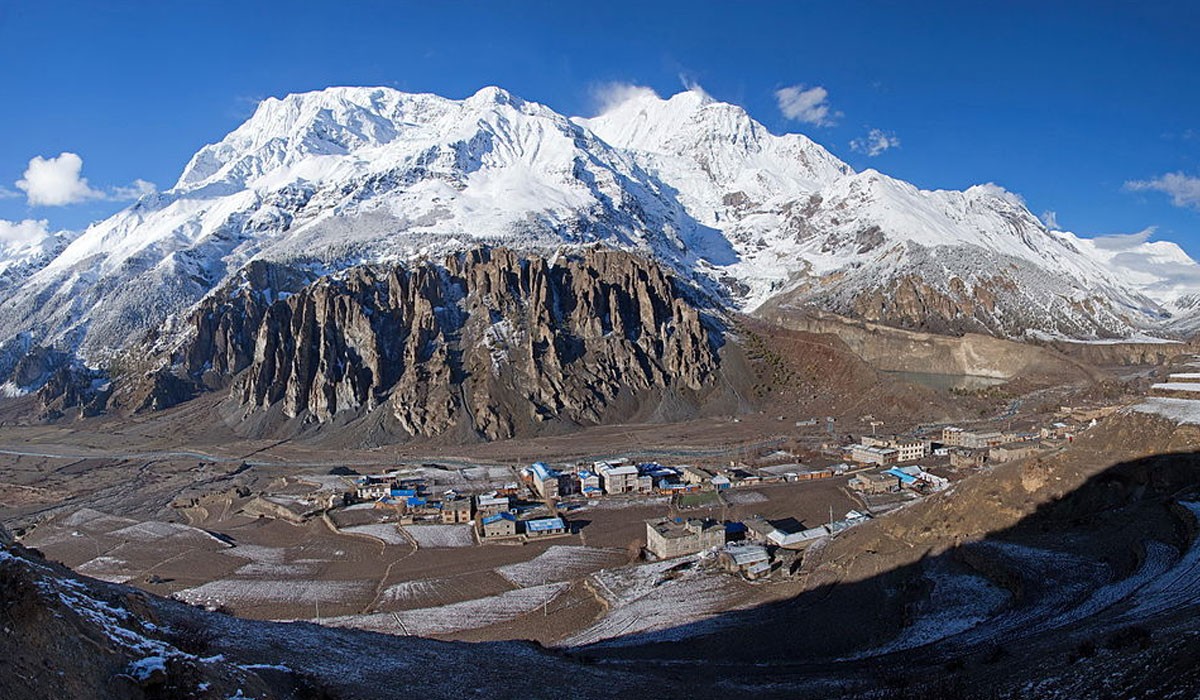


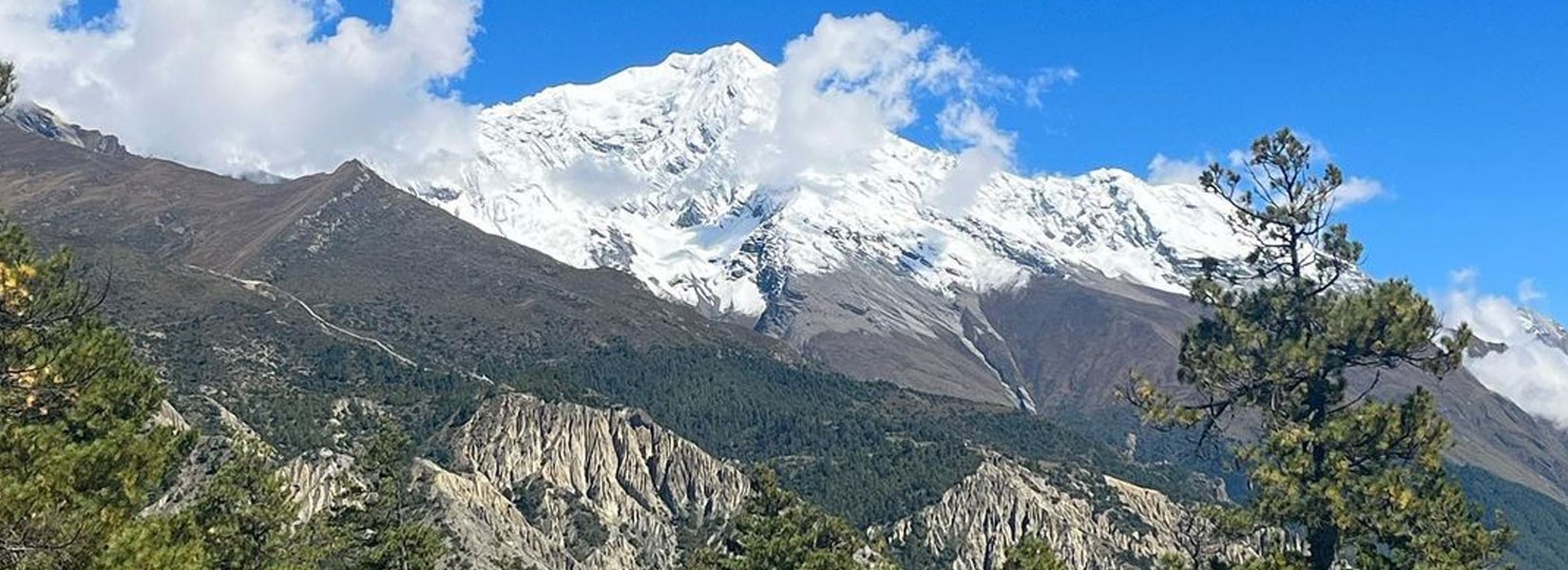





 As the Annapurna Circuit 7 Days Trek takes place on the second most popular trekking route in the entire country, you can expect a similar level of services and amenities from this mainstream trekking route during your expedition. You will also have the option to switch to a luxurious trekking option from a standard one which has some additional perks and more luxurious amenities in the food and accommodation segment.
As the Annapurna Circuit 7 Days Trek takes place on the second most popular trekking route in the entire country, you can expect a similar level of services and amenities from this mainstream trekking route during your expedition. You will also have the option to switch to a luxurious trekking option from a standard one which has some additional perks and more luxurious amenities in the food and accommodation segment. To make your Annapurna Circuit 7 Days Trek an enjoyable and memorable journey, packing the right gear and equipment is a must. You need to be prepared for long hours of trekking in different climatic zones; although you are recommended to pack light for the adventure, you don’t want to miss the essentials.
To make your Annapurna Circuit 7 Days Trek an enjoyable and memorable journey, packing the right gear and equipment is a must. You need to be prepared for long hours of trekking in different climatic zones; although you are recommended to pack light for the adventure, you don’t want to miss the essentials.